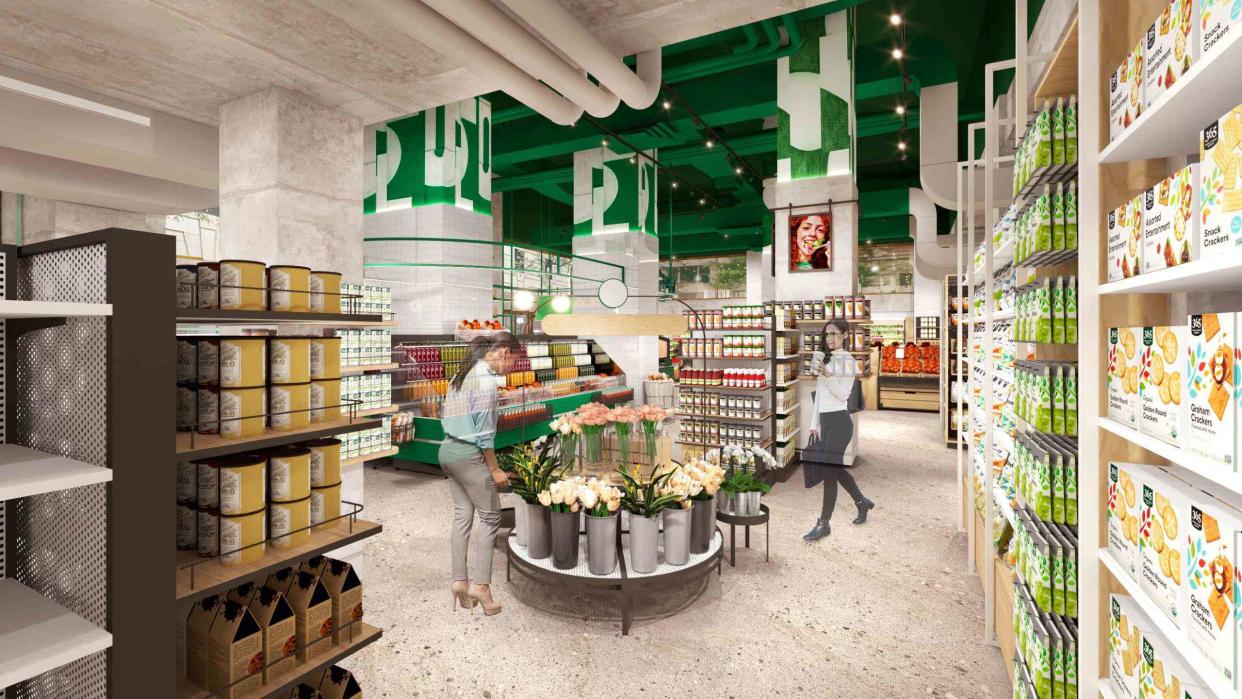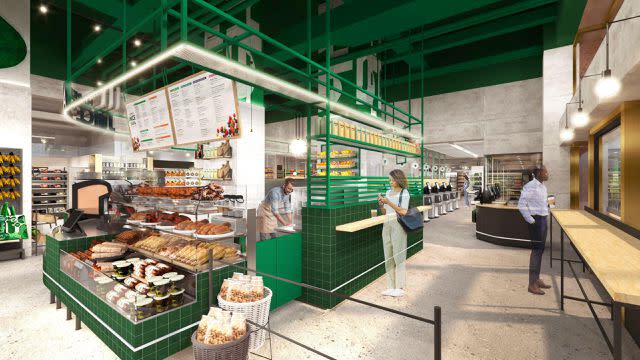Here’s Why Whole Foods and Trader Joe’s Are Opening Convenience-Style Grocery Stores
The urban food shopping experience is about to change.

Whole Foods Market
Five years ago, Whole Foods quietly tested an idea.
The massively popular grocer rolled out a smaller-sized store, something along the lines of a New York City bodega — the kind of corner markets that sell everything from breakfast sandwiches to yogurt and paper towels. Turns out, customers liked the concept. But then the pandemic struck, prompting the upscale grocer to focus on its bigger locations.
Now, Whole Foods is returning to that idea. It will soon roll out the first in a new series of stores called Whole Foods Market Daily Shop, with the initial one in a space formerly occupied by a Food Emporium on Manhattan’s Upper East Side. The Austin-based company, which has 17 bigger locations in New York, says more are coming to the city — and in other urban areas across the country.
It knows it needs to skedaddle.
But what might have seemed innovative in 2019 is now mainstream. All manner of retailers — from DWS, the discount shoe store, to big stores such as Macy’s and Target, to grocers such as Publix, Trader Joe’s, and Aldi — are focusing on much smaller footprints than their enourmous suburban cousins.
Related: The Viral $2.99 Trader Joe’s Mini Tote Bag Costs as Much as $500 on eBay
Whole Foods’ new shops will be about 7,000 to 14,000 square feet, depending on the location, compared with about 40,000 square feet for a typical suburban grocery, filling roughly an acre. (For comparison, big warehouse chains like Costco average about 150,000 square feet.)

Whole Foods Market
All manner of retailers are focusing on much smaller footprints than their enormous suburban cousins. Whole Foods is one of them — with an upcoming opening of a smaller-sized store, something along the lines of a New York City bodega.You might think customers would balk at fewer choices, but Trader Joe’s and Aldi have helped grocery shoppers get used to smaller spaces. Their stores average about 20,000 square feet, enabling them to move into empty spaces in strip malls or build brand-new stores in less time than a big space would require.
These mini-shops provide retailers with three advantages, according to a white paper by Placer.ai, a location analytics company that follows food and retail trends.
Related: Whole Foods Is Adopting New Biometric Technology That Lets You Pay Using Your Palm Print
First, smaller shops mean more customers per square foot, a key factor in big cities where rents can be astonishingly high. Second, stores can tailor their merchandise to neighborhood demographics. For instance, Target — which has opened a flock of locations in a number of college towns — carries candy, bottled water, and snacks for students on the run. Third, small spaces encourage community engagement by including espresso bars, providing indoor and outdoor seating, and hosting events.
That’s already happened in Chicago, where the first Foxtrot Market opened in 2014. Stocked with coffee, prepared specialty foods, and beverages, its locations have become hangouts for locals on laptops. It’s become so popular — and successful — that Foxtrot has expanded to Dallas, Austin, and Washington D.C., and it recently acquired a small fresh food-focused Chicago chain called Dom’s Kitchen & Market.
And in Manhattan, Trader Joe’s has started to test out a new concept: It recently opened Trader Joe’s Pronto — a 2,800-square-foot grab-and-go store that offers affordable ready-to-eat options such as sandwiches, salads, and snacks. It’s already drawn in New York University students and office workers looking for a quick bite.
Whole Foods nodded to all that in a press release: “In bustling hubs like Manhattan where proximity matters, these stores will bring Whole Foods Market closer to existing customers, while extending the company’s reach to others in surrounding neighborhoods,” the company said.
Beyond all that, the new abbreviated format can provide valuable market research.
“As the retail landscape continues to evolve, companies can use small-format stores to continue developing their brick-and-mortar channels, while adapting to shifting consumer behaviors,” Placer.ai says.
In short, the urban food shopping experience will soon be a lot more tailored. And that's a good thing.
For more Food & Wine news, make sure to sign up for our newsletter!
Read the original article on Food & Wine.






